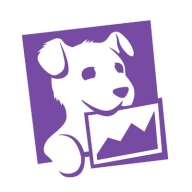

Datadog and Checkmk compete in the monitoring tools category. Datadog appears to have an edge in environments requiring complex and extensive feature integration, while Checkmk is more straightforward and cost-effective for smaller operations.
Features: Datadog provides hosted monitoring, shareable dashboards, and diverse integrations. It offers anomaly detection and visualization capabilities that cater well to complex environments. In contrast, Checkmk stands out for its auto-discovery features and seamless integration that simplify setup for small to medium enterprises without requiring intricate infrastructure.
Room for Improvement: Datadog could enhance data representation and dashboard customization, and improve real-time query building and technical support. Checkmk may benefit from expanding broader integrations and documentation improvements while simplifying its interface and adopting predictive monitoring capabilities to boost user accessibility.
Ease of Deployment and Customer Service: Datadog supports deployments across cloud environments but faces mixed reviews in customer service, especially in specific regions. Checkmk offers straightforward on-premises deployment and is viewed as affordable, yet its support could be more intuitive.
Pricing and ROI: Datadog has a complex pricing model perceived as expensive, but its feature customization offers a good cost-benefit for large enterprises. Checkmk, conversely, provides competitive pricing, making it appealing for budget-sensitive organizations. Both tools offer high ROI by improving operational efficiencies and reducing downtime.


Checkmk is a powerful tool for monitoring IT infrastructure, providing vital insights on servers, databases, network devices, and custom applications.
Primarily used for supervising IT infrastructure, Checkmk helps organizations ensure service availability by monitoring hosts, processes, load, storage, and network appliances. With support for both Linux and Windows environments across multiple data centers, Checkmk performs compliance checks and preserves historical data for core network devices.
What are the key features of Checkmk?Checkmk is deployed extensively in large enterprise environments for monitoring critical infrastructure. It proves particularly useful under conditions of frequent power outages or network issues, helping maintain smooth operations. While the alert acknowledgment process and interface require improvements, and the lack of an agent-less platform complicates server management, the strengths in auto-discovery, integration, and comprehensive monitoring make Checkmk a strong contender for IT infrastructure monitoring.
Datadog is a comprehensive cloud monitoring platform designed to track performance, availability, and log aggregation for cloud resources like AWS, ECS, and Kubernetes. It offers robust tools for creating dashboards, observing user behavior, alerting, telemetry, security monitoring, and synthetic testing.
Datadog supports full observability across cloud providers and environments, enabling troubleshooting, error detection, and performance analysis to maintain system reliability. It offers detailed visualization of servers, integrates seamlessly with cloud providers like AWS, and provides powerful out-of-the-box dashboards and log analytics. Despite its strengths, users often note the need for better integration with other solutions and improved application-level insights. Common challenges include a complex pricing model, setup difficulties, and navigation issues. Users frequently mention the need for clearer documentation, faster loading times, enhanced error traceability, and better log management.
What are the key features of Datadog?
What benefits and ROI should users look for in reviews?
Datadog is implemented across different industries, from tech companies monitoring cloud applications to finance sectors ensuring transactional systems' performance. E-commerce platforms use Datadog to track and visualize user behavior and system health, while healthcare organizations utilize it for maintaining secure, compliant environments. Every implementation assists teams in customizing monitoring solutions specific to their industry's requirements.
We monitor all Cloud Monitoring Software reviews to prevent fraudulent reviews and keep review quality high. We do not post reviews by company employees or direct competitors. We validate each review for authenticity via cross-reference with LinkedIn, and personal follow-up with the reviewer when necessary.